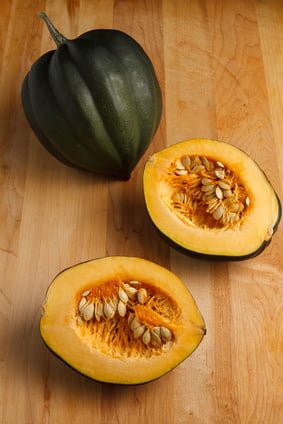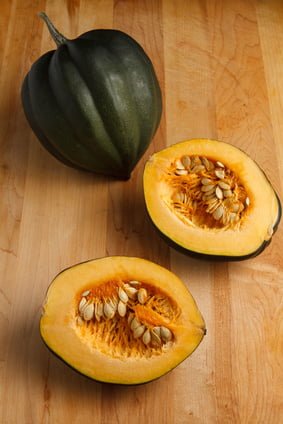Are you a fan of delicious and nutritious acorn squash? If so, you’ll want to know exactly when it’s perfectly ripe and ready for your recipes. Determining the ripeness of acorn squash can seem tricky, but fear not! In this article, we’ll explore the telltale signs that indicate your acorn squash is at its peak flavor and ready to be enjoyed. From the color and texture to the hollow sound and stem condition, you’ll gain the knowledge to confidently select ripe acorn squash every time. Get ready to become a pro at spotting the perfect squash for your next meal!
Signs that Acorn Squash is Ripe
Visual Appearance
One of the most obvious signs that an acorn squash is ripe is its visual appearance. Ripe acorn squash will have a vibrant, even color. The skin should be dull, indicating that it has fully matured. A ripe acorn squash will have a smooth and unblemished skin. If the skin appears shiny or has any soft spots or bruises, it may not be fully ripe.
Tapping Test
Another way to determine if an acorn squash is ripe is by performing a tapping test. Gently tap the squash with your knuckles and listen for the sound it produces. A ripe acorn squash will produce a hollow sound, indicating that the flesh inside is fully developed. If the sound is dull or thud-like, the squash may not be ripe yet.
Stem Color
Checking the stem color of an acorn squash can also indicate its ripeness. As the squash matures, the stem will start to turn brown. If the stem is still green or partially green, it may be an indication that the squash is not yet ripe. The browning of the stem is a natural process that occurs as the squash reaches its peak ripeness.
Hardness of Skin
The hardness of the squash’s skin is another factor to consider when determining its ripeness. Ripe acorn squash will have a hard and firm skin. Gently press your finger against the skin of the squash – if it feels soft or gives in easily to pressure, it may not be fully ripe. The skin of a ripe acorn squash should be tough and resistant to any pressure applied.
Timing for Harvesting Acorn Squash
Days to Maturity
The number of days it takes for an acorn squash to reach maturity can vary depending on the specific variety. On average, it takes around 80 to 100 days for acorn squash to fully mature. Checking the seed packet or plant label when you first plant the squash can give you an estimate of the days to maturity for that particular variety. Keep track of the planting date and estimate the harvest time accordingly.
Average Harvest Time
In addition to the days to maturity, there is also an average harvest time for acorn squash. This timeframe typically falls between late summer and early fall. It’s important to monitor the progress of the squash as it nears its estimated harvest time, as variations in weather and growing conditions can affect the actual ripening time. Harvesting within the average harvest time period is a good guideline to ensure optimal ripeness.
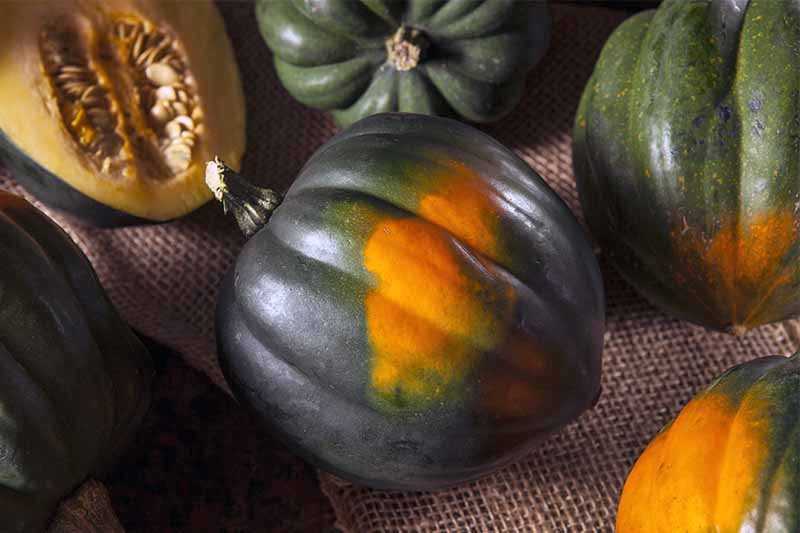
Observing the Skin Color
Dullness of Skin
When assessing the ripeness of an acorn squash, the dullness of its skin is a crucial factor. Ripe acorn squash will have a skin that appears dull, with a lack of shine. The dullness indicates that the squash has fully matured and is ready for harvest. If the skin still appears shiny, it may not be ripe yet and should be left on the vine to continue ripening.
Deep Green to Golden-Orange Color
The color of the acorn squash’s skin is another visual cue for determining ripeness. As the squash matures, it transitions from a deep green color to a golden-orange hue. This color change is a clear indication of ripeness. Keep in mind that the transition may not happen uniformly across the entire squash, but as long as the majority of the skin has turned golden-orange, it is likely ready for harvest.
Checking Stem Color and Drying
Stem Turning Brown
To get a sense of whether an acorn squash is ripe, pay attention to the color of its stem. As the squash ripens, the stem will gradually turn brown. A brown stem is a sign that the squash has reached peak ripeness. If the stem is still green or partially green, it suggests that the squash is not yet ready for harvest and should be left on the vine to continue maturing.
Drying of the Stem
In addition to the stem turning brown, the drying of the stem is another indication of ripeness. As the squash matures, the stem will begin to dry out and shrivel. This drying process occurs naturally and is a sign that the squash is ripe and ready to be harvested. If the stem is still moist or appears fresh, it is likely that the squash is not yet fully ripe.
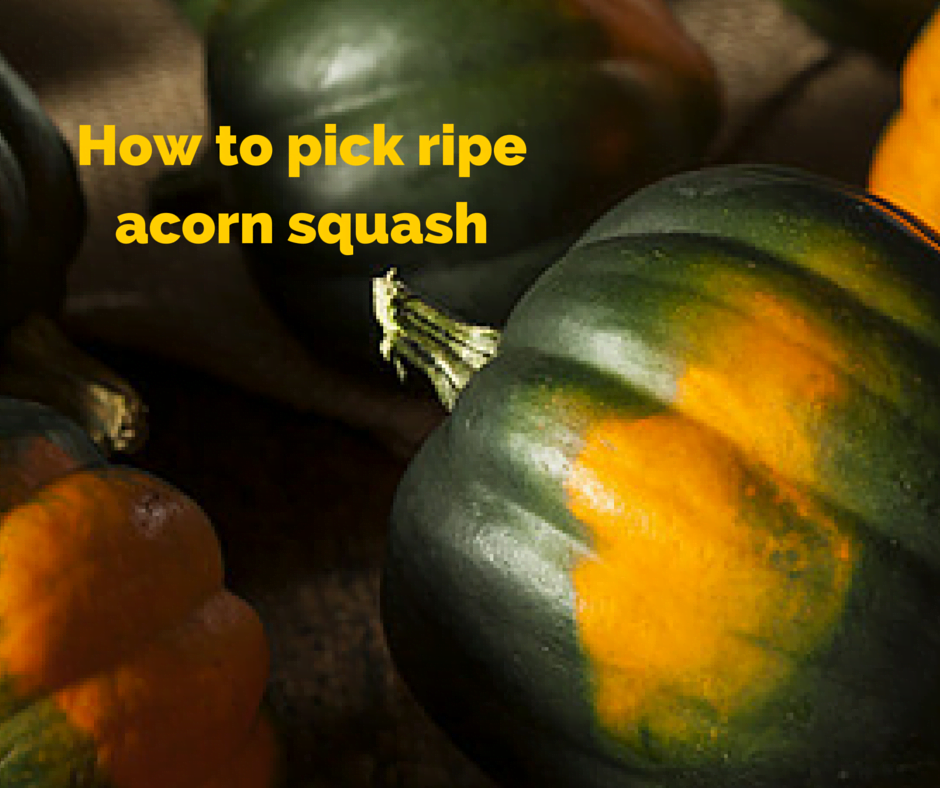
Examining the Skin Hardness
Tough Skin
When assessing the ripeness of an acorn squash, it’s important to consider the hardness of its skin. Ripe acorn squash will have a tough and firm skin. Gently run your fingers along the surface of the squash – if the skin feels tough and resistant to any pressure applied, it is likely ripe and ready for harvest. A soft or easily indented skin may indicate that the squash is not yet ripe.
Resistance to Pressure
In addition to the toughness of the skin, the resistance to pressure is another factor to consider when examining an acorn squash for ripeness. Apply gentle pressure to the skin of the squash using your thumb or finger – if it resists and maintains its shape, it is a positive sign of ripeness. However, if the skin easily gives in or feels soft, the squash may not yet be fully ripe and should be left on the vine to further mature.
Testing the Sound When Tapped
Hollow Sound
A popular method to determine the ripeness of acorn squash is by tapping it and listening to the sound it produces. Ripe acorn squash will emit a hollow sound when tapped. Hold the squash firmly in your hand and gently tap it with your knuckles or fingers. If it produces a hollow sound, similar to tapping on a drum, it is a reliable indicator that the squash is ripe and ready to be harvested.
Dull Sound
On the other hand, if the sound produced when tapping the squash is dull or thud-like, it may suggest that the squash is not yet fully ripe. A dull sound indicates that the flesh inside the squash has not fully developed, and it is best to leave it on the vine to continue ripening. Keep in mind that the dull sound can also be an indication of an overripe or rotting squash, so it’s important to assess other signs of ripeness as well.
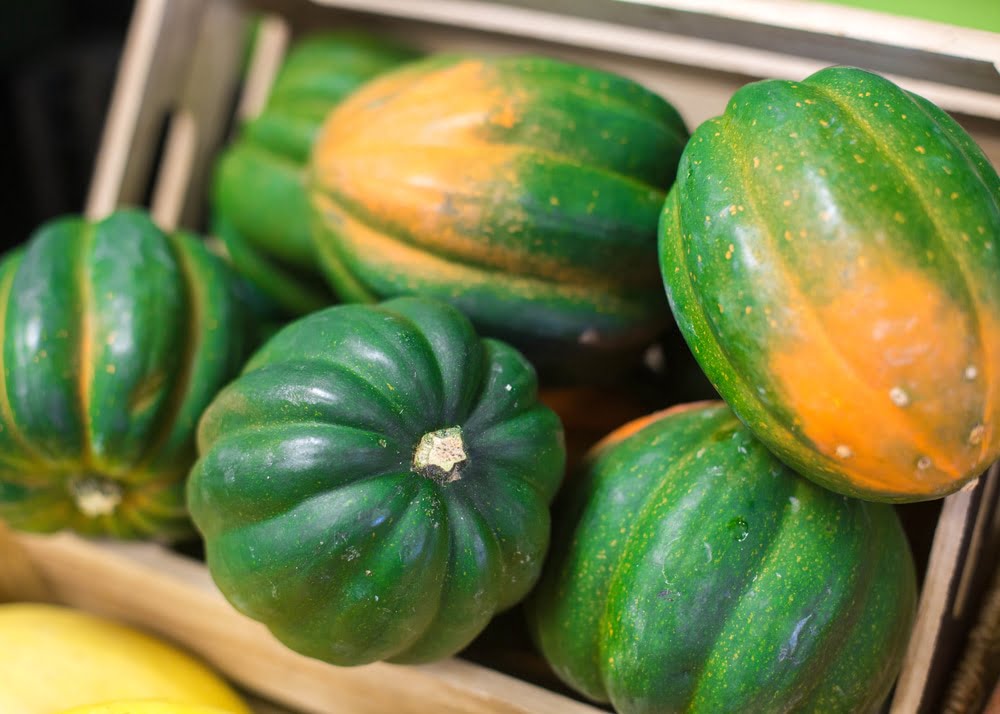
Other Signs of Ripeness
Fully Developed Fruit
A definitive sign of ripeness in acorn squash is a fully developed fruit. A ripe acorn squash will have a well-rounded shape and will feel heavy for its size. If the squash is still small or has an uneven shape, it may not be ripe yet. The fruit should also feel dense and solid, indicating that the seeds inside have fully matured. A hollow or empty feeling when gently squeezing the squash may suggest that it is not yet ready for harvest.
Yellowing of Leaves
Observing the leaves of the acorn squash plant can also provide clues about the ripeness of the fruit. As the fruit nears maturity, the leaves of the plant will start to yellow and wilt. This yellowing is a natural process as the plant redirects its energy towards the ripening fruit. If the majority of the leaves have turned yellow and are beginning to die off, it is a good indication that the squash is ripe and ready to be harvested.
Cured Skin
Another visual sign of ripeness is a cured skin on the acorn squash. After the squash is harvested, its skin goes through a curing process. During this time, the skin hardens further and develops a protective layer. A cured skin will have a slightly dull appearance and may develop small cracks. If the skin feels tough and has undergone this curing process, it suggests that the squash is ripe and can be stored for an extended period.
Factors Impacting Ripeness
Varietal Differences
It’s important to note that different varieties of acorn squash may have varying ripening times and characteristics. Some varieties may take longer to ripen, while others may have different color changes or skin patterns. When determining the ripeness of an acorn squash, consider the specific variety and its unique ripening traits. Refer to the seed packet or consult gardening resources for detailed information on the particular variety you are growing.
Growing Conditions
The conditions in which the acorn squash is grown can also impact its ripeness. Factors such as temperature, sunlight, soil quality, and water availability can influence the rate at which the squash matures. Aim to provide optimal growing conditions for the acorn squash to ensure proper ripening. Consistent watering, sufficient sunlight exposure, and maintaining the recommended temperature range for the squash variety can help promote optimal ripening.
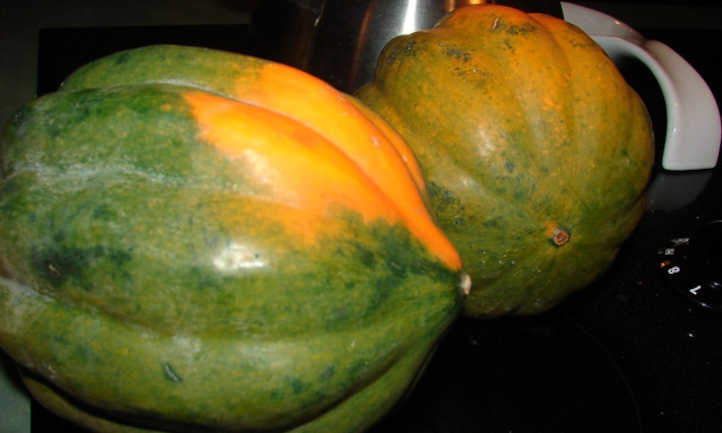
Importance of Harvesting at the Right Time
Enhanced Flavor and Sweetness
Harvesting acorn squash at the right time is essential for obtaining the best flavor and sweetness. When the squash is allowed to fully ripen on the vine, it has time to develop its full flavor profile. Ripe acorn squash tends to be sweeter, with a richer and more pronounced taste. Harvesting at the peak of ripeness ensures that you can enjoy the full potential of the squash’s flavor and sweetness in your recipes.
Improved Storage and Shelf Life
Another reason to harvest acorn squash at the right time is to maximize its storage potential and shelf life. When properly ripened before harvesting, acorn squash can have an extended storage life. The flesh will be firmer and less prone to spoilage, allowing you to store the squash for several weeks, if not months. This prolonged storage capacity is particularly useful if you have a bountiful harvest and need to preserve the squash for later use.
Consequences of Harvesting Too Early or Late
Poor Taste and Texture
Harvesting an acorn squash too early or too late can lead to poor taste and texture. If the squash is harvested before it has fully ripened, it may lack the desired sweetness and flavor. The texture could be underdeveloped and may result in a rather starchy and less enjoyable eating experience. On the other hand, if the squash is left on the vine for too long, it may become overripe and develop a mushy consistency, negatively affecting its taste and texture.
Decreased Storage Potential
Harvesting acorn squash too early or too late can also impact its storage potential. If the squash is harvested before it has reached full ripeness, it may not store well and could spoil quickly. Immature squash is more susceptible to rotting and mold growth. Conversely, if the squash is left on the vine for too long, it may start to deteriorate and lose its storage capacity. Harvesting at the right time ensures that you can maximize the squash’s storage potential and enjoy its benefits for a longer period.
In conclusion, determining the ripeness of an acorn squash involves assessing various signs such as visual appearance, stem color, skin hardness, and sound when tapped. Monitoring the timing for harvesting, observing the skin color, checking stem color and drying, and examining the skin hardness are essential steps in ensuring that the squash is at its peak ripeness. Other signs of ripeness, including a fully developed fruit, yellowing of leaves, and a cured skin, can also contribute to the assessment. Factors such as varietal differences and growing conditions can impact the ripening process. Harvesting the acorn squash at the right time is crucial for enhanced flavor and sweetness, improved storage potential, and avoiding the consequences of harvesting too early or too late. By following these guidelines, you can enjoy the delicious taste and long-lasting freshness of perfectly ripe acorn squash in your favorite recipes.
